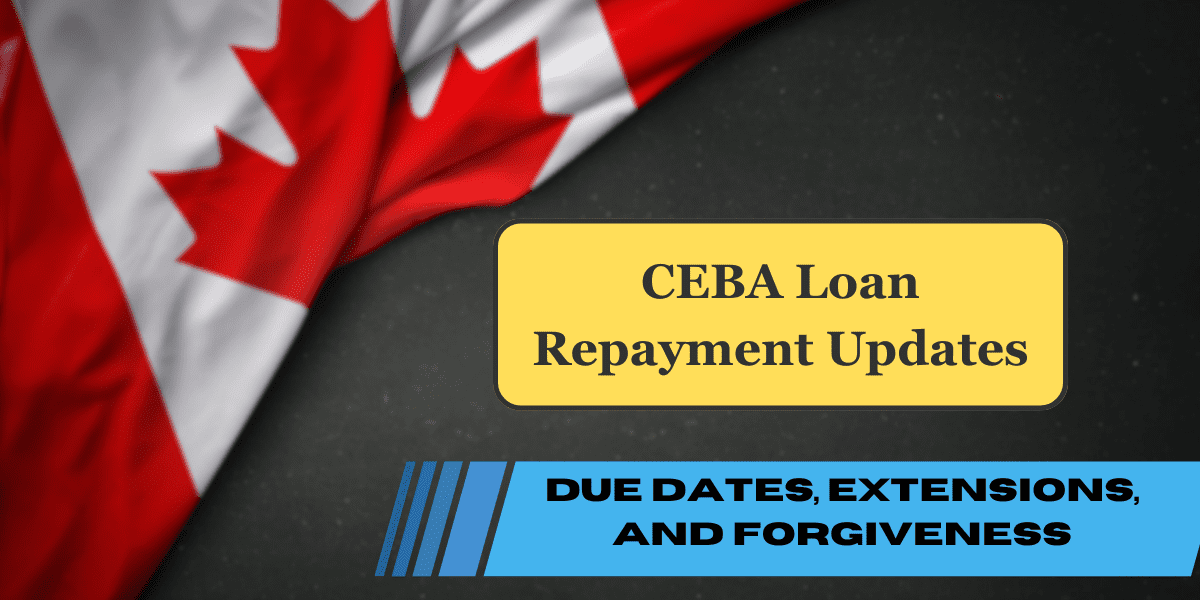When the pandemic struck Canada in early 2020, businesses nationwide had to adapt to a drastically altered landscape almost instantly. In response, the federal government introduced the Canada Emergency Business Account (CEBA) in April 2020, which provided businesses and not-for-profits with interest-free loans of up to $60,000.
CEBA stopped issuing new loans in June 2021, and the government offered partial loan forgiveness to businesses that utilized the program. To receive partial forgiveness, businesses needed to repay the loans by a certain date, which was extended to September 30, 2023.
Here are the updated CEBA loan forgiveness and repayment deadlines, and what borrowers need to know now.
Table of Contents
Key Takeaways (CEBA Loan Repayment)
- If you applied for partial loan forgiveness, you must repay your loan in full (minus the forgiven portion) by March 28, 2024.
- CEBA loan forgiveness has tax implications. The forgiven portion of your loan is considered taxable income and must be reported when you file your taxes.
- Any outstanding loans after January 18, 2024, will accrue 5% interest annually.
| What is Leave Loading? |
| australia crisis payment 2024 |
| Australia Youth Allowance Rates |
| 4529 tax refund australia july 2024 |
| SCHADS Award Rates |
When is my CEBA loan repayment deadline?
The deadlines for CEBA loan repayments are approaching quickly. Adhering to the terms below by the specified dates is essential to qualify for partial loan forgiveness.
- March 28, 2024: If you apply to refinance your loan before January 18, 2024, but still need more time to finalize the repayment, this is the deadline to repay your loan in full (minus the forgiven portion) and qualify for partial forgiveness.
- December 31, 2026: This is the last date the CEBA loan is due. You must repay your loan, plus 5% annual interest, by this date.
Am I eligible for CEBA loan forgiveness?
If you have a CEBA loan, meet the eligibility criteria, and your loan is in good standing, you should be eligible for loan forgiveness.
If you qualify, your financial institution should have contacted you in late 2022. Initially, the deadline to repay the loan and qualify for partial forgiveness was December 31, 2023, but it has been extended to January 18, 2024.
You might still be able to refinance your CEBA loan if you apply through the original lender by January 18, 2024, or earlier.
How much is partial loan forgiveness?
The amount of loan forgiveness depends on your loan size, with up to 33% forgiveness to a maximum of $20,000.
- If you borrowed $40,000 or less, you might be eligible for up to 25% forgiveness. For a $40,000 loan, this equals $10,000 ($40,000 x 0.25 = $10,000).
- For loans between $40,000 and $60,000, forgiveness is 25% on the first $40,000 and 50% on amounts between $40,000 and $60,000.
For example, with a $60,000 loan:
$40,000 x 0.25 = $10,000
$20,000 x 0.50 = $10,000
This totals $20,000 in forgiveness on your $60,000 CEBA loan ($10,000 + $10,000 = $20,000). You must repay $40,000 by January 18, 2024 ($60,000 – $20,000 = $40,000).
What are the CEBA loan repayment terms?
All CEBA loans are interest-free until January 18, 2024. After this date, any outstanding balance will convert to a term loan with a 5% annual interest rate.
You will need to make regular monthly payments, ensuring the entire balance is repaid by December 31, 2026.
Wondering how to pay back your CEBA loan?
Your CEBA loan is held with a financial institution, and repayments should be made directly to your lender. Contact your financial institution to arrange payment. The Canada Revenue Agency (CRA) has additional information available.
What should you do if you can’t repay your CEBA loan?
If your business hasn’t recovered from the pandemic, you’re not alone. Rising inflation and borrowing costs have pressured many companies, making it difficult to repay CEBA loans.
If you can’t repay your loan, contact your financial institution immediately. Defaulting can lower your credit score, incur fees, penalties, or even cause your lender to seize the asset securing the loan. Discuss your options with your lender, which may include securing a new loan with higher interest but a longer repayment period, or disposing of assets to free up capital.
Will CEBA loan forgiveness impact my taxes?
CEBA loan forgiveness is taxable. The forgiven portion must be declared as income when you file your taxes. For instance, if you receive $10,000 in loan forgiveness, you must declare that amount as income.
Important steps to take today if you have a CEBA loan
If you have a CEBA loan and are uncertain about your eligibility for loan forgiveness, contact your financial institution. Check your loan status online or speak with a small business advisor.
Be mindful of the deadlines, and if you cannot afford to repay your CEBA loan, make an alternative plan promptly. For more FAQs, visit the CRA website.
FAQs
What is the CEBA loan in Canada?
The Canada Emergency Business Account (CEBA) was introduced on April 9, 2020, as a financial relief measure by the Government of Canada to assist businesses affected by the COVID-19 pandemic. The application deadline for the CEBA program was June 30, 2021.
Who qualifies for a small business loan?
To be eligible for a small business loan, the business must have been profitable for the past two years. Additionally, the business should have a minimum annual income of ₹1.5 lakhs. The applicant must be at least 21 years old at the time of applying and no older than 65 years at the time of loan maturity.




